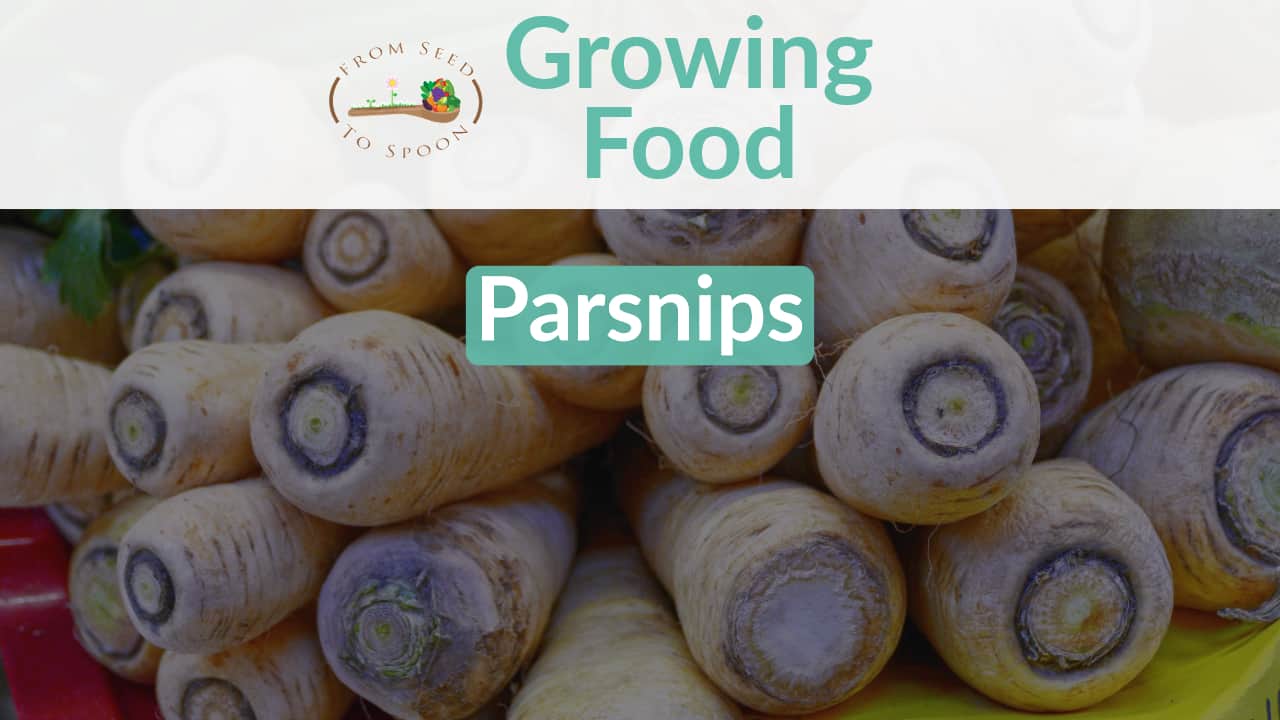How to Grow:
Parsnips can be planted outdoors 2-4 weeks before your last spring frost and again approximately 12 weeks before your first fall frost. Parsnips can be continued to plant over the summer, but they don’t much care for temperatures over 90F (32C) and will not do well fin these conditions. You can see specific dates for your location using our FREE iOS, Android, and Universal Web App.
Parsnips can grow to be almost 3 feet tall! Space out your plants at least 9 per square foot. Parsnips will require full sun to part shade. Take care to notice what plants are around the area as well, see the companion plant section below. Plant your seeds 1/2 inches deep. Once planted, it will take approximately 7-21 days to sprout. Keep covered with burlap and well-watered during germination to increase your chances of sprouting. Must have consistent moisture until maturity. Reduce to prevent cracking once mature.
Companion Plants:
Companion planting is a vital part of organic gardening. Companion plants assist in the growth of others by attracting beneficial insects, repelling pests, or providing nutrients, shade, or support. There are also plants that do not like being next to each other. Some plants get too tall and can provide too much shade for your plant. Sometimes certain plants attract the same pests, so it is important to try and separate these. Parsnips are great companion plants because they attract predatory insects which help to protect itself and other plants around it. They are especially good at repelling fruit flies which makes this very beneficial for fruit trees and bushes.
See companion plants for 100 foods in our FREE iOS, Android, and Universal Web app!
Pests:
Pests can be one of the most difficult challenges you face in the garden. We strive to grow food without the use of pesticide and luckily there are natural solutions for most of these nasty pests! The pests listed below are common ones for pole beans:
- Aphids
- Carrot Rust Fly
- Cutworms
- Flea Beetles
- Gophers
- Groundhogs (Woodchucks)
- Leaf Miners
- Nematodes
- Rabbits
- Root Maggots
- Thrips
- Voles (Field Mice)
- Wireworms
Learn more about how to manage pests and attract beneficial insects in our FREE iOS, Android, and Universal Web App!
Harvesting:
Parsnips will be ready to harvest in approximately 95-120 days. Parsnips are very similar to carrots in which they’ll be sweeter and more tender when you pick them early. They also sweeten up in the fall as it turns colder.
Cooking & Eating!
Learn more about growing 100 different foods, including how to manage various pests in our FREE iOS, Android, or new Universal Web App!

Carrie Spoonemore, co-founder of “From Seed to Spoon,” stands as a beacon of inspiration for gardeners and health enthusiasts alike. Her journey alongside her husband, Dale Spoonemore, in creating a platform that demystifies gardening and promotes a healthier lifestyle, has made a significant impact on individuals around the globe. Through the “From Seed to Spoon” app, Carrie has dedicated herself to empowering people to take control of their health and environment by growing their own food.
With a profound belief in the power of gardening to improve mental and physical health, Carrie’s contributions to the Seed to Spoon blog reflect her holistic approach to wellness. Her articles often focus on the nutritional benefits of homegrown fruits and vegetables, organic gardening practices, and the mental health benefits of spending time in nature. Carrie’s expertise in health science shines through in her detailed discussions on how specific plants can contribute to a balanced diet and overall well-being.
Carrie’s passion for gardening is deeply intertwined with her commitment to family and community wellness. She frequently shares personal stories of how gardening has brought her family closer together, offering practical tips for involving children in gardening activities and making it a fun, educational experience. Her writing encourages families to explore gardening as a means of spending quality time together while learning about nature and sustainability.
In addition to gardening advice, Carrie’s contributions to the blog include insights into the use of technology to enhance the gardening experience. She has played a crucial role in designing the “From Seed to Spoon” app to be user-friendly, ensuring that users of all ages and backgrounds can navigate the complexities of gardening with ease. Her vision for the app is not just as a gardening tool but as a vehicle for change, inspiring individuals to adopt a more sustainable lifestyle by growing their own food.
Carrie Spoonemore’s presence on the blog is marked by her compassionate approach to teaching and her unwavering belief in the transformative power of gardening. Her work continues to inspire a community of gardeners to pursue a healthier, more sustainable way of living, proving that with the right tools and knowledge, anyone can become a gardener and advocate for their health and the planet.







One thought on “Parsnips: How to Grow and When to Plant in Your Backyard or Patio Garden!”
You would not believe this, but I tried parsnips for the FIRST time just about three years ago. I did not know what they were when someone gave them to me. They were quite tough, so ended up in a stew. They were not very good, but got my attention. Now I like them as an alternative to carrots; especially since I loathe carrots! I will not be growing any this years, but perhaps next year. The garden can not be worked on until the end of the month, and I will not sow any for autumn here.